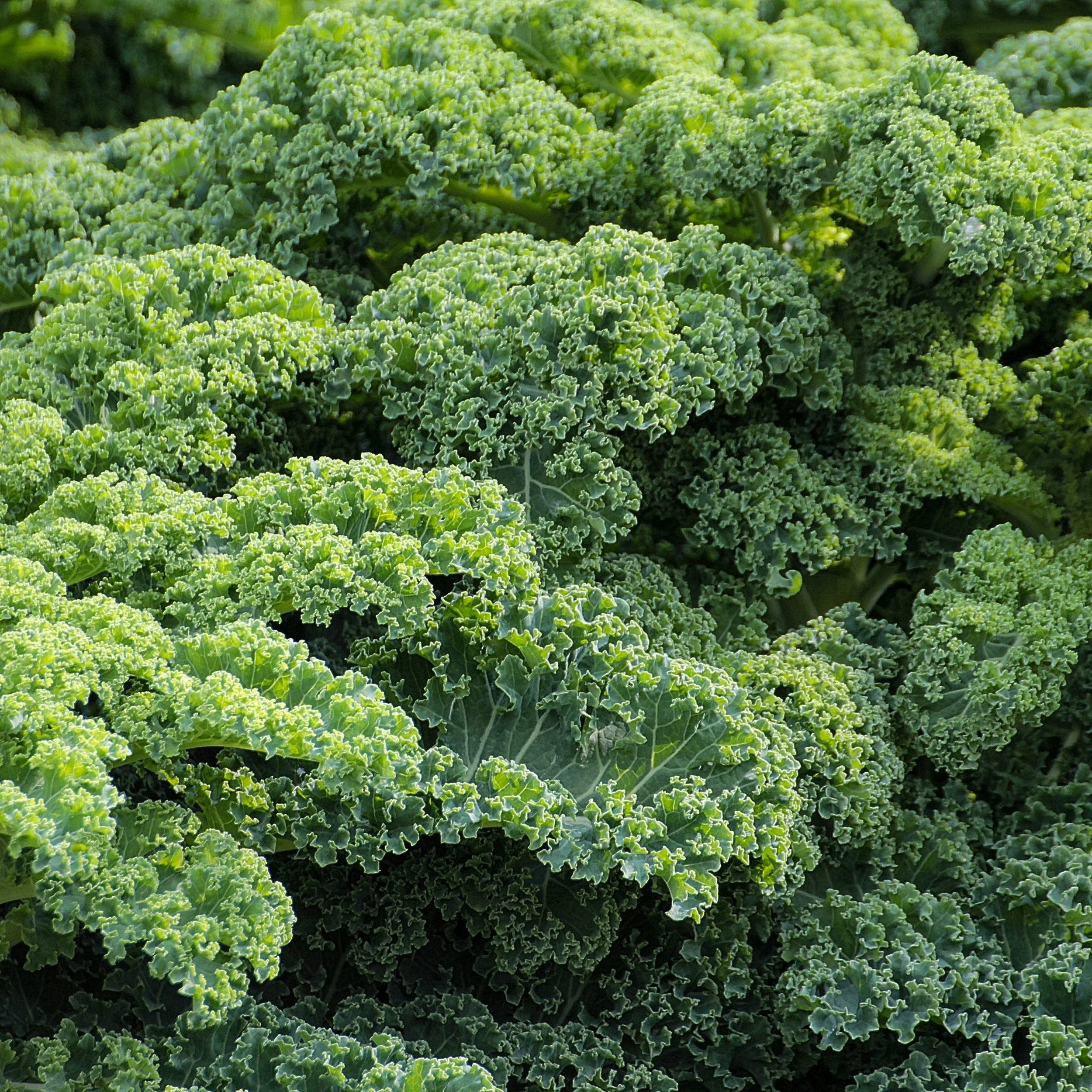Grower's Guide - February - written by Chef Consultant, Celia Brooks
Incredible Kale
Kale is the Cinderella of vegetables. Her glass slipper is a metaphor for a sea change in popular food culture that was a perfect fit for kale’s innate talents of nutrient density and versatility. Seemingly overnight she launched into a meteoric rise from shabby peasant food to “superfood” poster girl for the 21st century healthy eating movement.
Farmers who grow kale must feel truly blessed – one day it was hardly worthy of animal feed, and the next they can’t grow enough of the stuff. One farmer in Lancashire, England, has been growing kale since the 1980s. Originally his crop was a minor sideline to other more profitable veg. The bulk of the demand for kale was from fishmongers, who used it to decorate their fish counters – hardly any was sold for eating. By 2013, demand for kale went ballistic and he decided to devote his entire farm to growing several varieties of kale. By 2017 he was shifting up to 600 tons of green kale alone per year for the UK market, and rising.
While kale is the rock star, I must also sing the praises of her dark leafy cruciferous sister, cavolo nero / black cabbage / Tuscan kale, which is interchangeable with kale but looks very different. One of its flat, long, stiff leaves can be equal in bulk to several leaves of kale and yes, it’s so dark green it’s almost black.
Kale’s superpower: it’s extremely high in lutein, an antioxidant benefitting eye health. It also contains sky-high levels of multiple phytochemicals with antioxidant, anti-cancer and anti-inflammatory properties, like all cabbage family veg - but the darker green, the more intense the benefits.
Here are some easy ways to get more of this incredibly potent health food in you, to live longer and prosper!
Raw: It needs taming, but raw is the best way to eat kale for max nutrition. It benefits from being massaged with oil. Simply strip the softer leaves away from the hard stem, pop them inside a sealed plastic bag with a few drops of good olive oil and work them with your fingers until evenly coated and softened. Use the softened leaves as the entire base for a salad or mix with other leaves.
Pesto: A good way to sneak raw kale into someone who would otherwise turn their nose up at it! Stir through just-drained pasta or spread on toast. For 3-4 servings: remove stalks to produce 100g of kale or cavolo nero leaf, wash and drain. Pack it into a high-speed blender with 1 sliced garlic clove, 1/2 teaspoon finely grated lemon zest, 1 tablespoon lemon juice, 50g pine nuts, 20g grated Parmesan cheese, 60 ml extra virgin olive oil, and a little sea salt and pepper. Use the pesto as soon as possible as the flavour lessens as it stands – if serving with pasta, make it while the pasta cooks.
Stir-fry: It can take a little longer than other stir-fry veggies, so for best results steam-fry it first as outlined below, then stir it in to any other wok-fried ingredients at the end. Heat the wok over the highest possible flame, add a little coconut oil or olive oil and the kale with a pinch of salt. Stir for 1 minute, then splash in a little water to help it steam. Continue stir-frying until it is cooked to your liking - around 5 minutes or up to 8 depending on how much you have in the wok. Alternatively, you can microwave it - simply wash and place in a microwaveable dish, retaining a little of the rinsing water, add a pinch of salt, cover and nuke for a minute or two until bright green and softened.
Kale Crisps with Cashew Fairy Dust
From “SuperVeg” by Celia Brooks
This recipe is as much about the Cashew Fairy Dust as the kale. CFD started out as an idea to develop a Parmesan stand-in – at first I combined it with various ingredients; eventually I stripped it back to cashews and salt alone, and it took on its own identity. So, it has accidentally become my go-to magic flavour enhancer and protein booster for pretty much anything. Fling it over salads and soups, curries and casseroles, porridge and ice cream, for instant umami - the fifth taste - aka savoury deliciousness – aka glutamates, abundant in cashews.
This quantity of CFD is more than you need for the kale - store it in a screw top jar and experiment with enchanting your food. You can cheat by making it with ready roasted and salted cashews, however the mix might not turn out quite as dust-like, due to oil added to the cashews.
Serves 4
Ingredients
For the cashew fairy dust:
100g raw cashews
½ teaspoon sea salt
For the kale crisps:
200g – 250g kale, washed and dried
1 tablespoon extra virgin olive oil
sea salt
Method
1) To make the cashew fairy dust, preheat the oven to 200C. Place the cashews on a baking tray and roast for 5 minutes or until golden. Toss onto a cold plate and cool completely, then whizz in a blender or food processor with the salt to a powder, stopping before it becomes pasty. Transfer to a screw top jar to store.
2) To make the kale crisps, preheat the oven to 150C. Line the two large baking trays.
3) Tear the kale leaves away from the inner stems into pieces. If you have just washed the kale, it must be thoroughly dried. Run it through a salad spinner, lay out on paper towels and pat dry. (You should have about 100g of prepared leaves for one tray.)
4) Put the kale pieces in the plastic bag and add the oil. Seal the bag and toss the kale around in it, then massage the kale to ensure that each piece has a light slick of oil all over.
5) Arrange the kale on the baking sheets in a single layer. Do not crowd the leaves – give each piece a little space, or else they won’t get crisp. Sprinkle lightly with salt. Use a bit less salt that you think you need because the kale shrinks and the salt intensifies.
6) Bake for about 15-20 minutes, until the kale is crisp and golden in places.
7) Using a teaspoon, scatter a couple of spoonfuls of cashew fairy dust lightly over the kale while still warm. Transfer to a wide bowl. Eat with fingers right away.



